Operating as a one-brand, direct-to-consumer (DTC) merchant is a great way to build a small business, especially considering 88% of consumers say they prefer buying from brands directly.
However, if you’re looking to significantly grow your sales and build an empire, you may want to consider a business model shift and start selling products from more than a singular brand.
In other words, if you’re ready to take the next step in ecommerce selling, take a closer look at the multi-brand ecommerce model.
While it can seem like a huge leap of faith to expand your business and acquire or partner with new brands, it doesn’t have to be. Here’s everything you need to know about multi-brand ecommerce to grow your sales.
What is a multi-brand strategy?
Simply put, a multi-brand strategy is when one ecommerce store sells inventory from different brands. A single company sells their products through multiple digital channels within the same market segment, but under a different company name and brand.
On a bigger scale, a multi-brand ecommerce strategy can refer to companies that buy up multiple, but similar companies. Think Old Navy and Gap, L’Oréal and Maybelline, and Expedia and Orbitz. These companies sound like rivals (and some once were) but now these dynamic duos each fall under the same respective corporate umbrella.
Multi-brand ecommerce can also include bigger ecommerce platforms that sell myriad brands. Take Gilt, for example.
If you sign up for Gilt, you’ll witness flash sales on an entire alphabet of brands. In contrast, if you sign up for Gucci’s newsletter, you’ll only receive updates about Gucci products.
Typically, a multi-brand store falls into one of two categories:
Branded house: Think of Air Jordans. This one brand sits underneath the full Nike umbrella. Customers know Air Jordans and Nike are distinct, but they know it’s best to go to Nike if they want to buy new Air Jordans.
A house of brands: Think Gilt, Amazon, Farfetch, or Net-a-Porter. A house of brands is an ecommerce retailer or third-party seller that targets consumers who like to shop from various brands all on one site.
Whatever your approach, multi-brand ecommerce means stepping away from the DTC model, acquiring or partnering with new brands, and operating more like a digital department store.
What does multi-brand ecommerce look like?
Multi-brand ecommerce, done well, is nearly invisible. But it’s not so invisible that it hides the benefits of multi-brand shopping.
“The reason potential customers visit a multi-brand ecommerce site is because they found some solution to a problem,” says David M. Burrows, founder of Hivessence.
“Do the brands you’re offering complement each other in helping to solve those issues?” he says. “If so, you increase your chances of not only selling one but perhaps several items at once.”
Multi-brand stores are growing in popularity because they offer customers the following solutions.
One-stop shopping
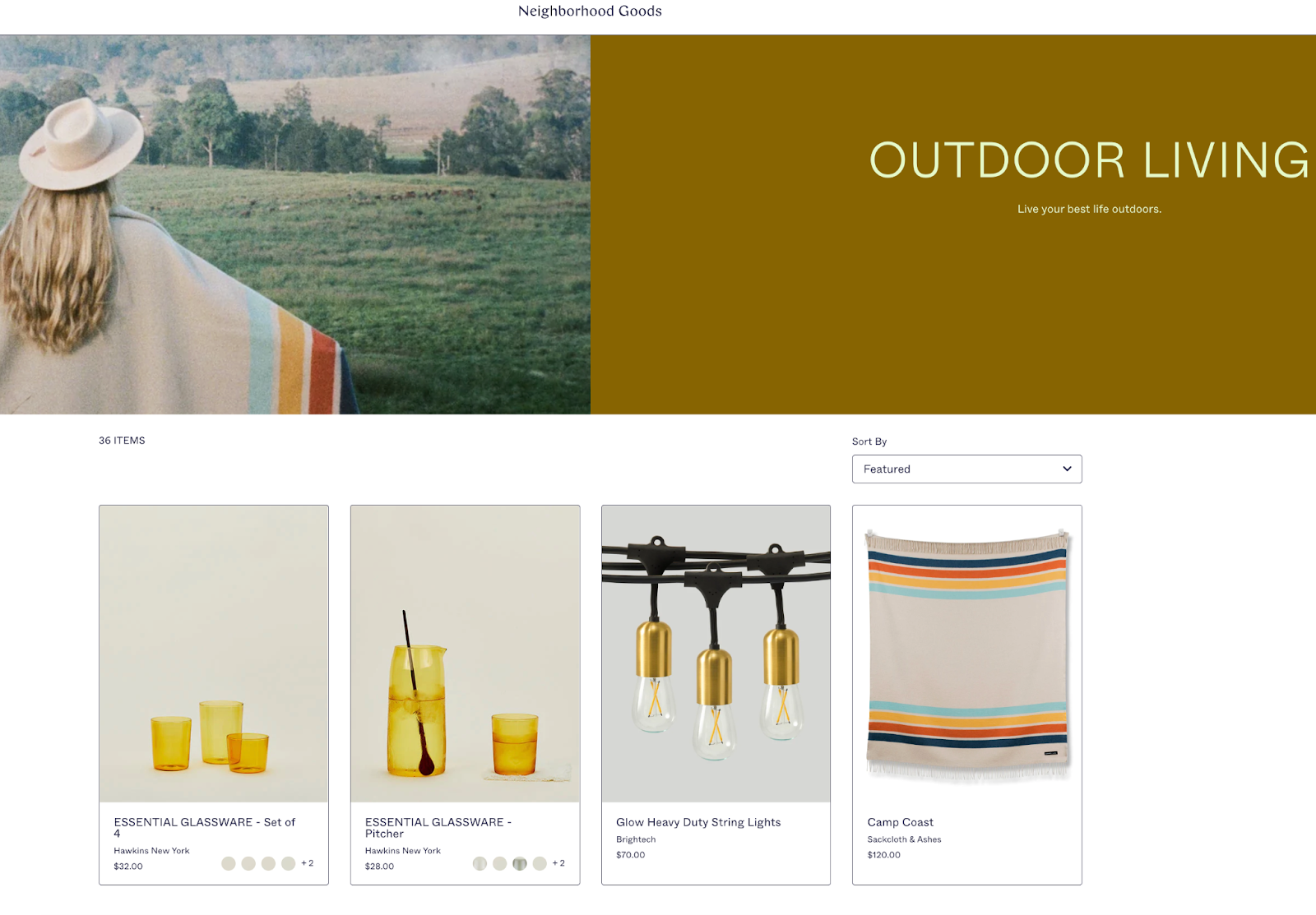
Burrows points to NeighborhoodGoods.com as an example. A click on Outdoor Living on this site yields related products from a number of brands.
Rather than spending time navigating to individual brands’ websites to shop for outdoor goods, the customer can find top outdoor products all on one page.
Wider inventory
Big-time e-tailer Mytheresa delivers a luxury brand and product curation experience across brands. This makes it possible for customers to shop a comprehensive look from different brands but from one product page.
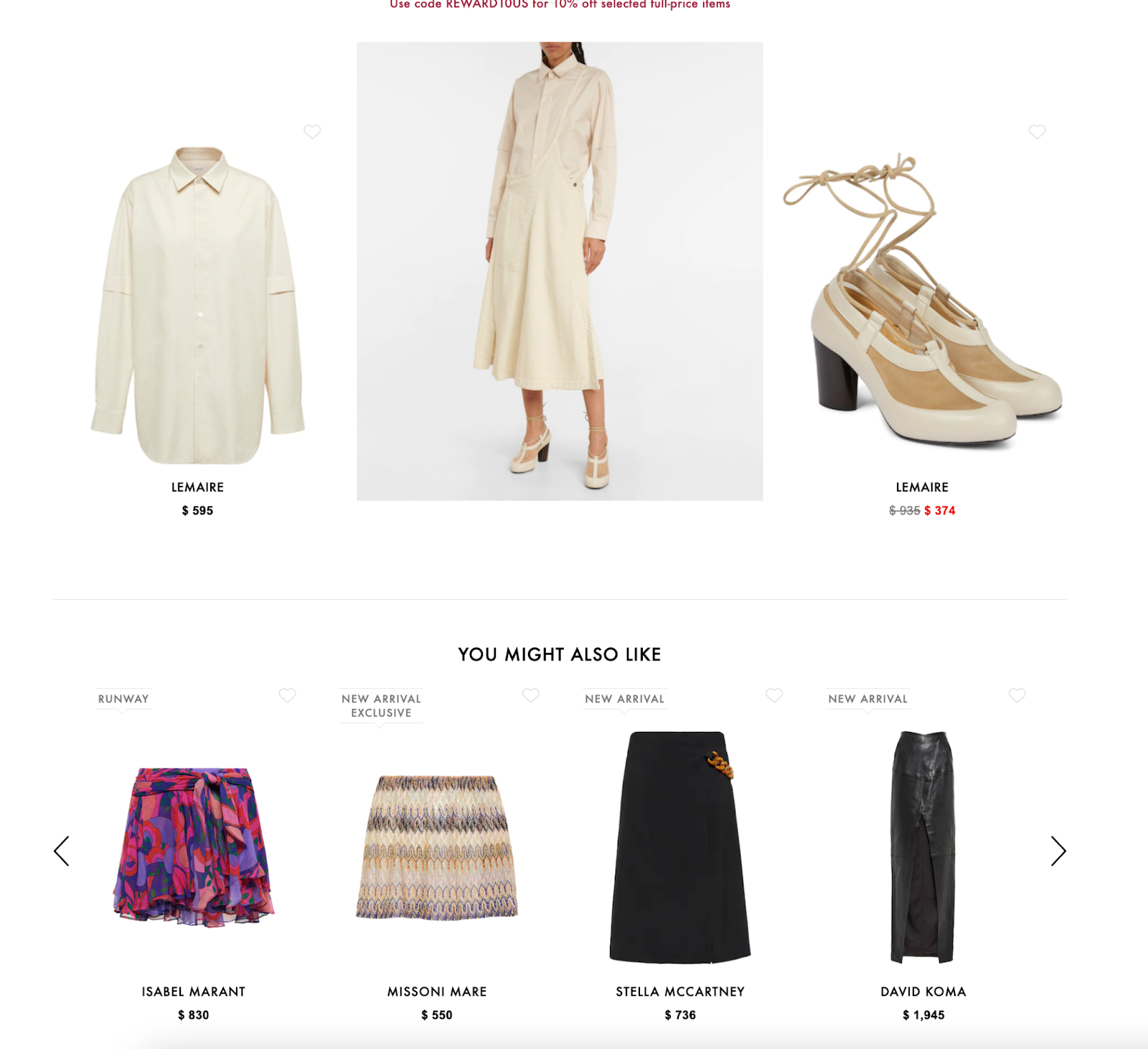
For example, consumers interested in a Lemair top will also see matching shoes and skirts, but that’s not all.
This multi-brand ecommerce will also recommend complementary items from brands that aren’t Lemair. This strategy provides a better customer experience and can increase average order value (AOV).
Discounts
Some multi-brand ecommerce outlets, like The Outnet, work out deals with multiple brands to sell out-of-season products at discounted rates.
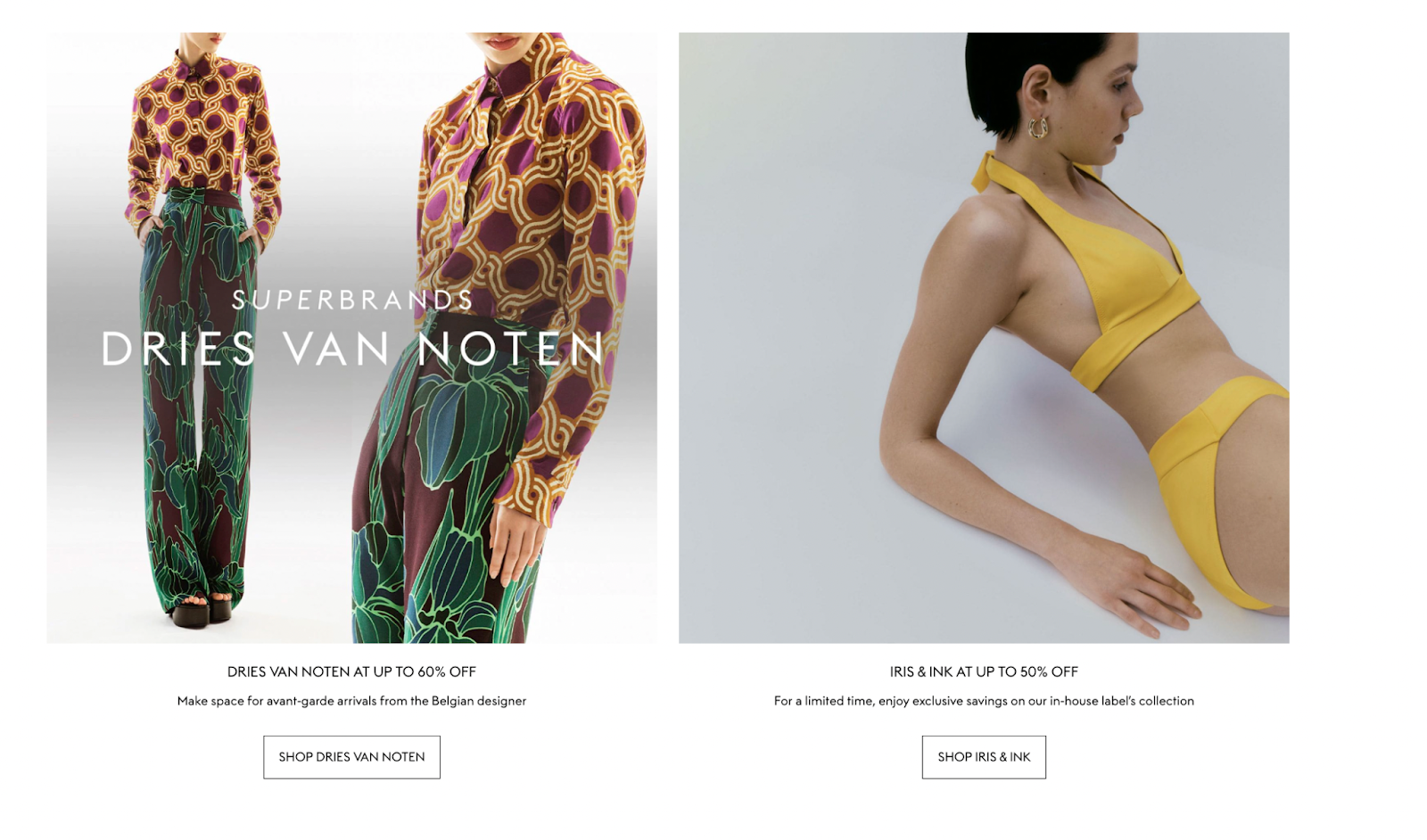
This is an excellent multi-brand strategy that benefits the consumer, the ecommerce company, and the brand. The consumer gets discounted prices, the ecommerce business takes a cut, and the brand reduces overstock problems.
Advantages of offering multi-brand ecommerce
The benefits of selling multiple brands on your ecommerce store goes beyond adding more inventory and pleasing more customers. Here are additional ways adding multiple brands to your ecommerce store benefits you.
Adding new products for increased cross-selling opportunities
The more diverse your products, the more opportunities there are for cross-selling. According to McKinsey, cross-selling and other “category-penetration techniques” increase sales by 20%. Profits, meanwhile, go up 30%.
Amazon—the most notable example of multi-brand ecommerce—reportedly earns over a third of its sales from cross-sells.
But as McKinsey notes, cross-sells won’t be relevant for customers until you offer enough variety for product suggestions to make sense.
More effective advertising
Being selective about your brands puts you in a better position to get specific with Segmentation, Targeting, and Positioning (STP). This strategy takes a customer-centric approach and helps ecommerce retailers target the right customers with the right ads for the right brands.
In other words, when you partner with more brands, your marketing team has room to segment your different customer profiles and position products appropriately.
Gap’s various brands achieve this STP ad strategy with military-like precision to sell its different styles to the right customers.
For example, The main Gap brand targets working-class consumers that want a cost advantage, while Athleta and Intermix target middle- and upper-class demographics who are interested in brand names.
“As part of building a new multi-brand ecommerce platform, you need to choose the brands you want to partner with,” says Lori Taylor, founder of The Produce Moms.
“If you are developing an ecommerce site for forms, you may target Samsung and Apple. You will have Segmentation, Targeting, and Positioning … to get it all right.”
Brand diversification
The way consumers think about brands is always evolving, notes consumer psychologist Kate Nightingale in the Journal of Brand Strategy. Nightingale explains that in recent years customers have trusted brands less than they trust other customers.
“With lowering trust awarded to brands and their managing organizations, the power of customer-to-customer trust has never been more important,” writes Nightingale.
“Only 34 percent of customers trust most of the brands that they buy and that 63 percent have much more trust in what influencers say about a brand than in what brands themselves state.”
This insight suggests other buyers and influencers will have a bigger impact on purchasing decisions than brand affinity.
Limiting your store to just one brand puts all your consumer trust eggs in one basket. If a customer—or a group of influencers—loses trust in your brand, they’ll likely seek out the competition.
However, a multi-brand strategy casts a wider net, where you capture the loyalty of customers and influencers who love multiple brands.
Multi-brand strategies and tactics
Launching a multi-brand ecommerce shop requires knowing where to meet your potential new customers.
There are three main strategies you can focus on: the social strategy, multichannel selling, and optimizing your platform.
Social strategy
A good social media strategy works no matter what type of shop you’re promoting. But when you’re incorporating multiple brands and trying to find which resonate with your audience, your best social media strategy is to start a two-way conversation.
To learn more, let’s revisit Old Navy. Dubbing itself “America’s most democratic clothing brand,” Old Navy asked users on social media earlier this year to write its next commercial. That meant entries like this one, from one of the winners:
https://www.tiktok.com/@thesamuelbeez/video/7030049499158465797
In the commercial itself, Old Navy included social media prompts from these entries, side-by-side with the action. Directions like “Dads. Dancing. Everywhere.” make for a funny, spontaneous ad strategy—one that’s uniquely fit for multi-brands like the Gap properties.
For starters, you need feedback to help you position your offerings. What brands will you offer? What brands are you missing? Social media is an ideal platform for soliciting this feedback because social users can’t wait to tell you what direction your store should go.
More importantly, social media users already overlap with a multi-brand audience. People who sign up for Gilt, for example, aren’t necessarily following one brand—they want the exclusive discounts Gilt has to offer on all their favorite brands.
And 62% of social media users say they follow brands on social media for discounts—higher than any other reason on the survey.
Multichannel selling
Multiple brands broadens your inventory, so it naturally fits in neatly with marketing through multiple channels. Multichannel sales will account for nearly 50% of all ecommerce sales by 2023, and 82% of retail shoppers are already using multiple channels of research before clicking Buy on ecommerce orders.
Shopify makes multichannel selling easier by supporting online stores with every aspect of B2B commerce, easily connecting with business’ Instagram and Facebook accounts, and seamlessly integrating with Faire’s online wholesale marketplace.
Even better, you can browse to the Shopify App store for third-party sales channels. Think Google, Pinterest, eBay, TikTok, Amazon, Walmart Marketplace, and WhatsApp.
Getting set up on these channels is as easy as integrating them with an existing Shopify store. But that still leaves the basic question of what tactics you can use to encourage multichannel selling.
To link it all together, try cross-selling.
According to Shaunak Amin, co-founder and CEO of SnackMagic, good cross-selling with a multichannel approach makes you a tough competitor:
“You acquire customers at different entry points when you have multi-brand ecommerce. For this reason, each vertical must relate to your other offerings for you to be able to cross-sell to customers. There are only so many times a customer will order from one vertical. But by playing to your strengths and creating a horizontal integration of your offerings to include related products and services, you can make it difficult for other companies to compete against you because people use your brands for many things. A ‘same customer, different sells’ strategy keeps customer acquisition budgets low as their lifetime value grows.”
Optimize your platform and become user-friendly
Good news: It’s not difficult to sell multiple brands in the same shop. A Shopify account and a few applications will help you get started. The trick is to build a strong user experience experience that rivals what customers expect when browsing brick-and-mortar retail.
“Take full advantage of your chosen ecommerce platform’s features,” says Stacey Kane, business development lead at EasyMerchant. She recommends “Shop by Brand” in particular, which makes it “easier for your customers to find the brands and products they prefer.”
Kane explains it doesn’t have to end there. By adding product information like categories and price range, you create a standard ecommerce experience, similar to what a customer might expect on a DTC website.
“Customers also want reviews,” Kane says—a note that’s especially useful when promoting multiple brands.
Customers may be encountering brands they haven’t seen before, making trust a more important factor. Almost a third of North American buyers trust these reviews on sight. And by responding to negative reviews, you can gain the trust of some 55% of potential customers.
For shoppers who are less used to the multi-brand experience and prefer DTC purchases, anything you can do to enhance their buying journey will have an impact.
If you can curate unique brands with competitive prices, you might get customers wondering why they don’t simply shop your site before the brand’s official site.
3 examples of multi-brand ecommerce websites
Let’s look at some classic examples of websites that seem to have the multi-brand formula figured out.
Neighborhood Goods
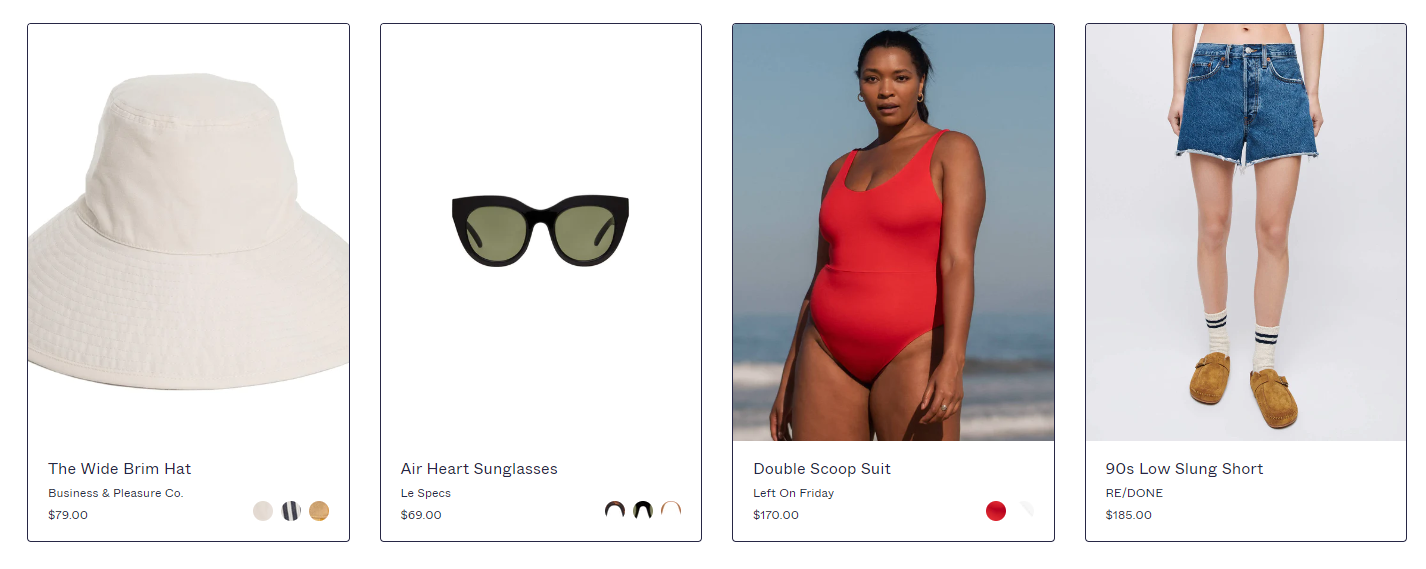
Neighborhood Goods includes an ever-changing lineup of brands on its site, without forcing users to browse by brand. In fact, you might not even notice the site has multiple brands until you dig a little deeper.
That’s because Neighborhood Goods is especially great at cross-selling items by adding them to curated collections, like The Summer Skin Edit (body lotion and non-aerosol sunscreen) or Summer Travel (lip balm, sunglasses, and duffel bags). Every product link mentions the brand without making it a highlight. All of the emphasis is on the products themselves.
Neighborhood Goods employs what Forbes dubbed a “department store model,” and browsing each collection reinforces the window-shopping experience.
The good news is sites like Neighborhood Goods are picking up the slack. Based out of Texas, the Neighborhood Goods’ ecommerce presence has been strong enough for the company to build three locations in Plano, Austin, and even New York.
The key to its success, according to Forbes? “Its business model doesn’t rely on tying capital up in acquiring massive amounts of inventory.” It’s an advantage built into the multi-brand ecommerce growth machine.
Mr. Porter
What Mr. Porter does successfully, beyond the department store vibe, is offer multiple brands like a service. It’s curating content.
On its website, Mr. Porter gives a pledge: “To help men lead stylish, happy and fulfilling lives.” In that way, it’s half-GQ, half-department store. And on Mr. Porter’s website, it makes even more sense to de-emphasize the multiple brands and focus on the overall aesthetic.
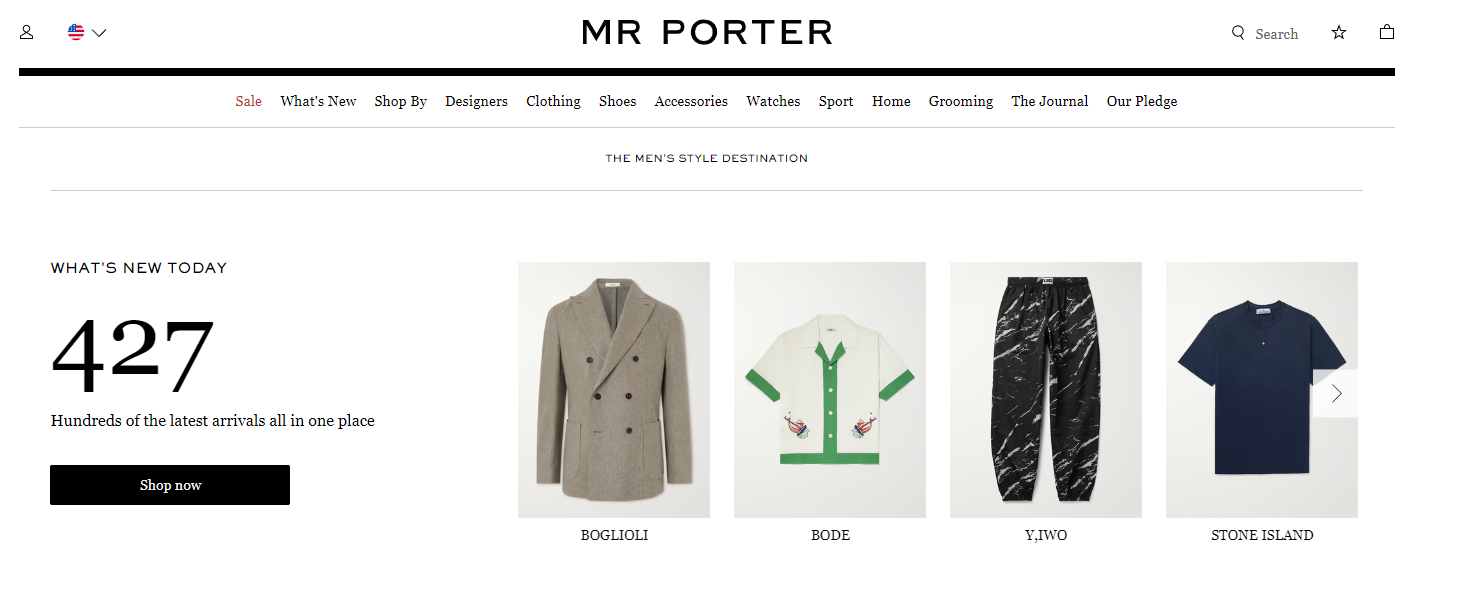
The ecommerce functions with collection-style curation, tossing in multiple brands with a single click. Here you’ll find it difficult to shop by brand, as Mr. Porter doesn’t want to emphasize the brand.
Instead, Mr. Porter’s ecommerce navigation looks more like a clothing manufacturer handling DTC sales. Collections like “The Essentials” are more common to individual brands, for example. Even Amazon Essentials, at the ultimate multi-brand retailer, focuses exclusively on Amazon’s ready-made brand.
Not so for Mr. Porter. There’s plenty of cross-selling between brands, but Mr. Porter prefers their customers to browse by vibe.
The Outnet
What’s one of the chief appeals of multi-brand ecommerce? Consumer’s hope they’ll find a deal they wouldn’t have found when shopping DTC. Enter sites like The Outnet, which provide multi-brand discounts by selling last season’s clothes to consumers.
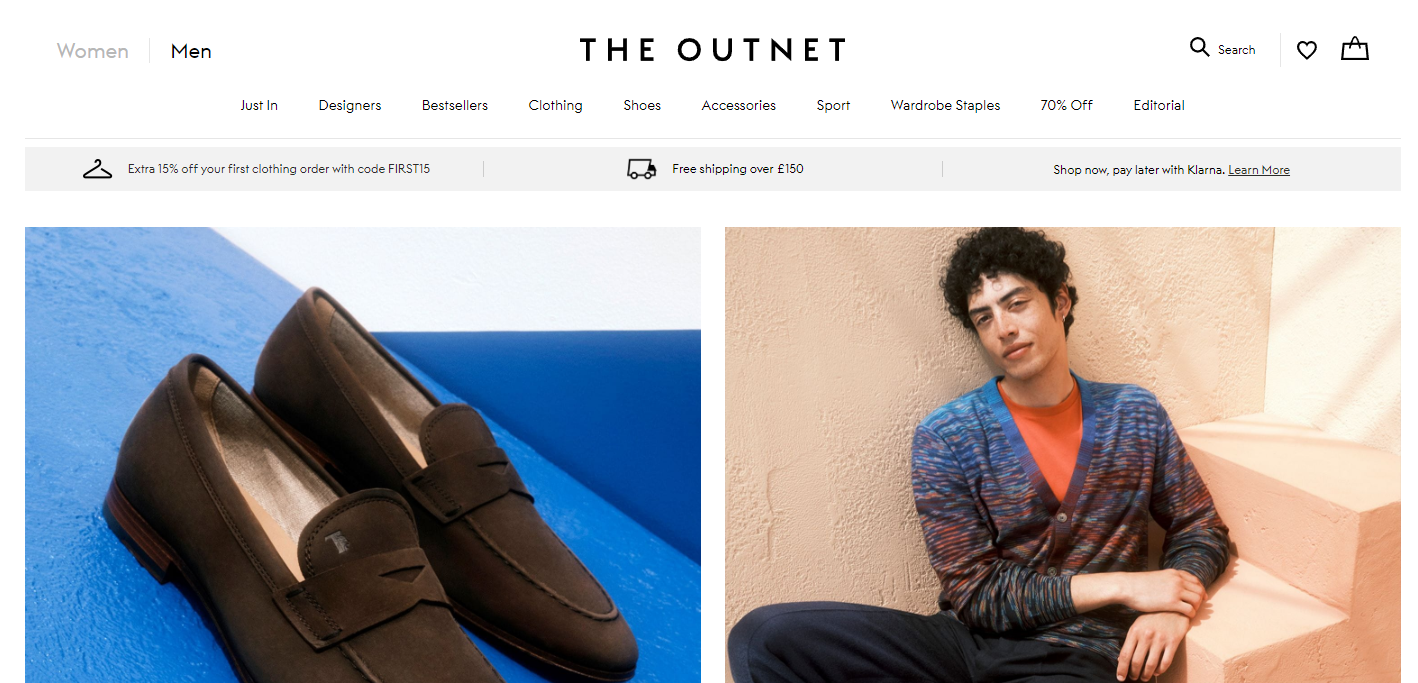
“Launched in 2009, the London-based e-tailer has made a name for itself by stocking previous-season goods at up to 75% discount,” writes Forbes.
Stocking 90% of its inventory from designers themselves, The Outnet gave brands a place to send these previous-season goods. As Outnet Managing Editor Emma Mortimer told Forbes, “Brands were quite shy about promoting their end-of-season stock. It tended to be hidden in out-of-town malls or sold via flash sales.”
Building a multi-brand ecommerce growth machine
If you want an ecommerce presence that extends beyond one style of inventory, using multiple brands can help you find your audience.
But it helps to know what you can do to establish multiple brands on one website. Our headless ecommerce guide can help you build a simple storefront that links multiple brands under one digital roof.
Multi-brand ecommerce FAQ
What is multi-brand ecommerce?
Multi-brand ecommerce refers to selling different brands on the same ecommerce platform, often within the same shop. It may also refer to companies that own multiple brands for a more DTC-like approach in each brand. This differs from single-brand ecommerce, where store owners sell products under a single brand, from a single online (and potentially offline) location.
What sorts of shops offer multiple brands?
There’s no specific qualifier for offering multiple brands in your store—only that you have an agreement in place with the brands you’re offering. Typically, a multi-brand ecommerce strategy contrasts with DTC. Online shops positioning themselves as “digital department stores” often seek a multi-brand strategy.
What are the advantages of multi-brand ecommerce?
Multi-brand ecommerce offers advantages to consumers like discounted sales from previous-season clothes or exclusive deals. For the seller, multi-brand ecommerce can make it easier to scale a store by deferring inventory to specific brands and offering a wider variety of products.
Why should I expand to multiple brands?
A multi-brand approach fits if you want to build an ecommerce growth machine similar to a department store or e-tailer. For other brands, a DTC approach can help forge a brand identity, though it means limiting inventory and the potential size of your audience.
What is an effective multi-brand strategy?
There are a few approaches you can take. Larger brands may create brands as subcategories in a strategy known as a “branded house.” An example is Nike’s Air Jordan brand. A “house of brands,” on the other hand, can be a headless commerce site that sources multiple brands in its inventory, similar to an online version of a physical store. In most cases, building an ecommerce shop from the ground up will use the latter strategy.
Read more
- After Ecommerce Sales Surged 72%, Thermacell Turns its Eye to Wholesale
- How a Seller of Outlandish Party Costumes Optimized Its Warehouse to Grow 400% & Compete With Amazon
- How a Wilted Bouquet Sparked a Romance & Business That Delivers Roses That Last All Year
- How Leesa is Disrupting the Mattress Industry by Shipping Beds in Boxes & Making Richard Branson Proud
- How Channelling “Your Inner Ten-Year-Old” Is the Secret to Brandon Steiner’s $50 Million Empire
- ‘Localize, Don’t Internationalize’: How the U.K.'s Simba Hit $100M+ Going Global
- How Velour Lashes Automates Holiday Ecommerce Sales & Won Beyoncé’s Loyalty
- ThirdLove Relies on Data and Platform Stability to Drive 347% YoY Sales Growth
- How World Wildlife Fund Canada Uses Shopify Plus to Protect the Polar Bears
- Why Marshawn Lynch Chose Shopify Plus to Power His Flagship Store Two Days Before Retiring from the NFL





